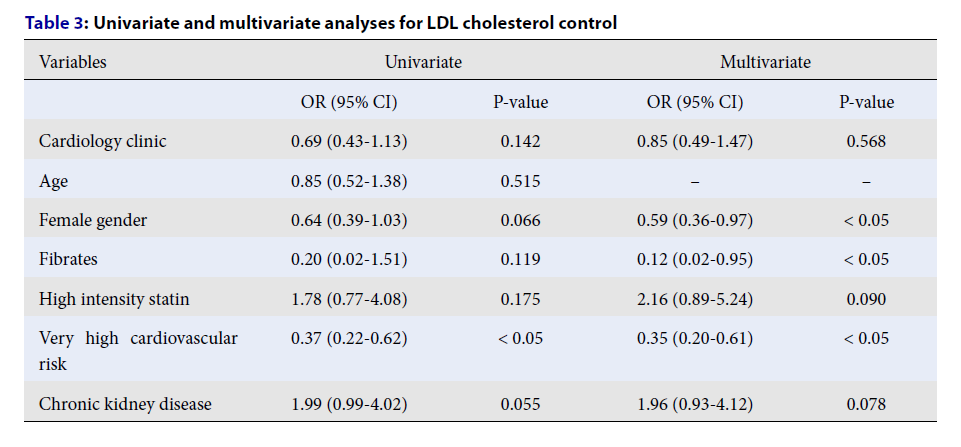Assessing LDL Cholesterol Management and Statin Use in Diabetic Patients: Disparities and Outcomes in a Vietnamese Tertiary Hospital Setting
DOI:
https://doi.org/10.15419/bmrat.v11i4.876Keywords:
Diabetes, LDL cholesterol, statins, therapeutic inertiaAbstract
Introduction: The control of low-density lipoprotein (LDL) cholesterol is a critical concern, especially for patients with diabetes, where the use of statins is essential. Despite this necessity, actual treatment practices and the achievement of LDL cholesterol targets are often suboptimal. This study aimed to assess the rate of LDL cholesterol goal attainment and examine statin prescribing habits within the cardiology and endocrinology departments of a tertiary hospital in Ho Chi Minh City, Vietnam.
Methods: This retrospective study encompassed 515 diabetic patients. We performed cardiovascular risk stratification to set appropriate LDL cholesterol goals for each patient. Through both univariate and multivariate analyses, we identified factors that influence LDL cholesterol management. Additionally, we reviewed patients' statin prescriptions before and after LDL cholesterol evaluation to understand prescribing patterns.
Results: Our study found that all included patients were categorized as having high or very high cardiovascular risk. A significant majority, 88.2%, were prescribed statins at an intermediate intensity. However, only 15.3% achieved their LDL cholesterol targets—21.7% in the high-risk category and a mere 9.4% in the very high-risk group. Factors conducive to effective LDL cholesterol management included being female, belonging to the very high cardiovascular risk group, and concurrent use of fibrates. Noticeably, among patients not meeting their LDL cholesterol goals, only 10.1% had their statin dosage increased post-evaluation. It was also observed that endocrinologists tended to reduce or discontinue statin dosages more often than cardiologists.
Conclusions: The rate at which diabetic patients in Vietnam meet their LDL cholesterol targets is alarmingly low. Priority should be given to female patients and those at very high cardiovascular risk to improve target attainment rates. There is a clear need for targeted interventions to enhance statin prescribing practices and, by extension, the management of LDL cholesterol in this population.

Downloads
Published
Issue
Section
License
Copyright The Author(s) 2017. This article is published with open access by BioMedPress. This article is distributed under the terms of the Creative Commons Attribution License (CC-BY 4.0) which permits any use, distribution, and reproduction in any medium, provided the original author(s) and the source are credited.
